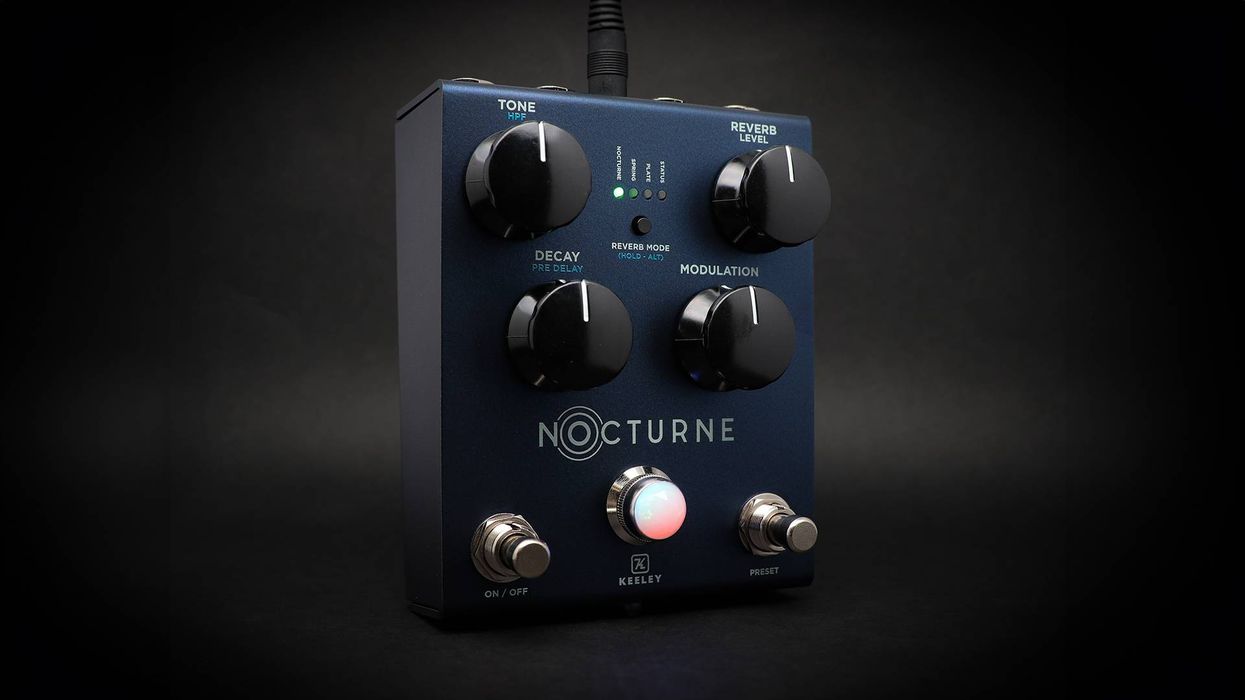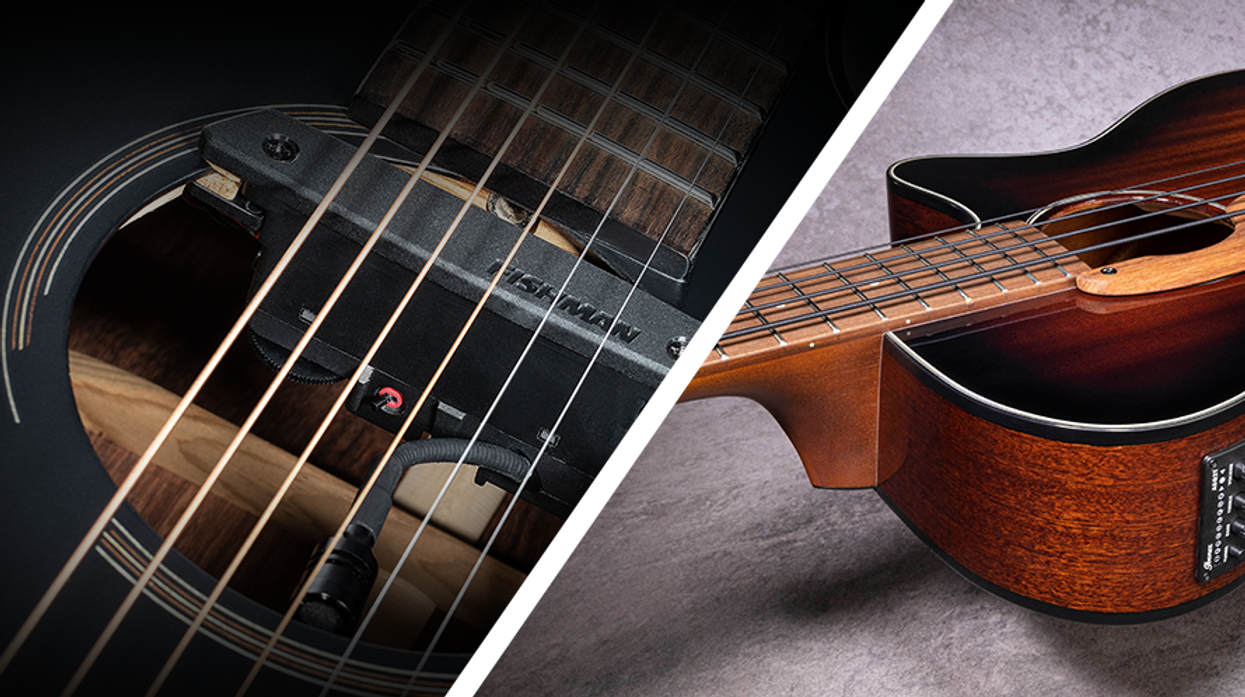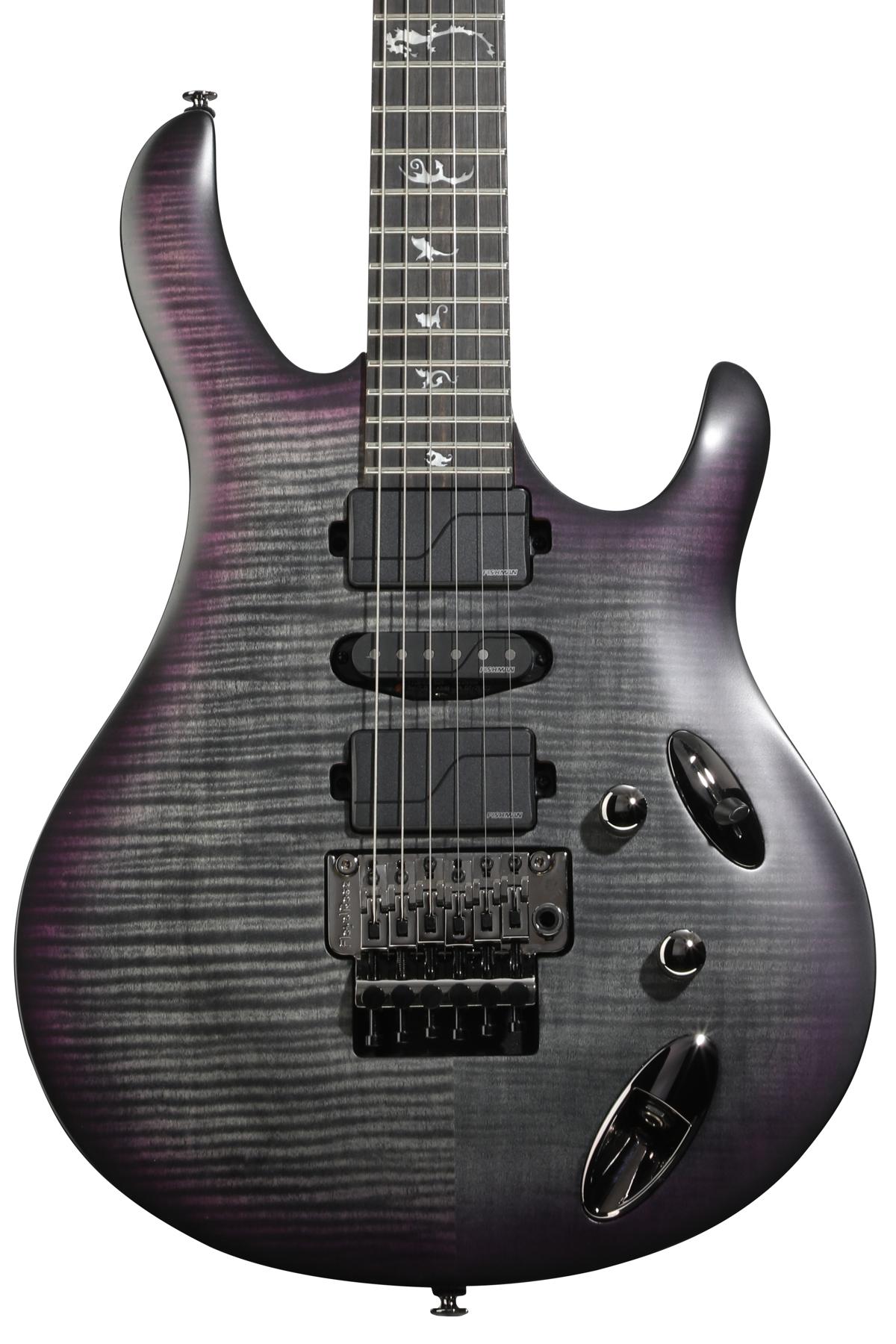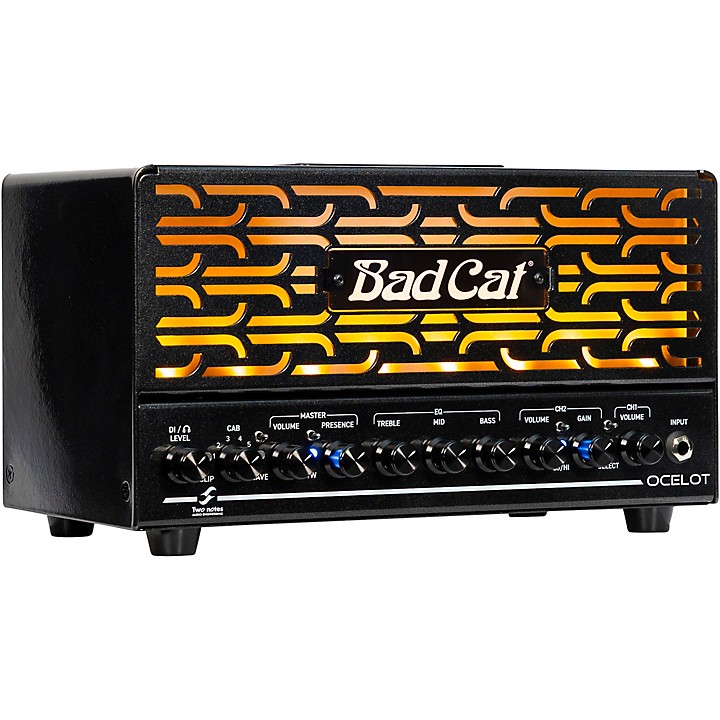RatingsPros:Airy, oxygenated, and aggressive mid- to high-gain distortion and overdrive tones. Interactive tone controls. Solid, creative build and design. Cons: A little more low-gain range would be nice. Street: $180 Dusky Electronics Hypatia duskyamp.com | Tones: Ease of Use: Build/Design: Value: |
Dusky Electronics doesn’t make a ton of pedals. But the few I have tried, the Mandorla boost and the new Hypatia distortion reviewed here, stand out for their adaptability in any kind of rig. Dusky pedals’ capacity for seamless, natural integration makes sense when you consider the mind of the guy who builds them. Chris Rossi, after all, builds great amplifiers, too. We loved his D2O amp. And we were especially enamored of its economical design and punchy tones—qualities that underscore Rossi’s preoccupation with unadulterated connections between guitar, wire, amplifier, and speaker.
Clearly, that outlook can pay big dividends in pedal design too. And in the new Hypatia, a pedal that remarkably spans overdrive, distortion, and fuzz, the approach yields the same organic, energized immediacy that distinguishes Rossi’s amps.
Sings from the Source
One key to the Hypatia’s beautiful crunchy tones is its cleverly executed input buffer. It’s designed to generate the resonant filter effect derived from mating passive pickups to a low impedance input stage—all while using a modern high-impedance input that enables Hypatia to work anywhere in an effects chain. This resonant filter effect is among the ingredients that make early germanium fuzzes so expressive. In the case of Hypatia, it means you can situate the pedal almost anywhere on a pedalboard and experience the expressive range and sensitivity to volume attenuation and picking dynamics that make a good Fuzz Face so versatile.
In most other respects, the Hypatia’s design is straightforward and easy to grasp, even though its controls can be interactive in subtle and sometimes nebulous ways. A wide-ranging master volume is called “more.” A very interactive treble/bass tone stack comprises knobs called “light” and “meat.” While the larger gain knob—another very rangy control that can be adjusted pretty readily with the toe of your sneaker—is designated “heat.”
Inside, Hypatia reflects a thoughtful amp builder’s exacting mindset. The printed circuit is tidy, immaculate, and etched with—among other things—nuggets of Stevie Wonder’s lyrical wisdom. The pedal can be run via 9V or 18V DC power or a 9V battery.
Straight Line to Sound Satori
Hypatia is a largely original design. And once you get past the visceral sense of immediacy, dynamism, and crackling energy it delivers at most settings, you realize that Hypatia’s tone signature is hard to pinpoint by way of familiar distortion templates. At low-gain settings (which really tend more toward mid-gain heat), Hypatia has none of the TS- or Boss OD-style honky boxiness. It’s less transparent and more colorful than a Klon. In higher-gain distortion modes, meanwhile, it’s airier than a Rat and more dimensional than most silicon fuzzes. And while Dusky often refers to Hypatia as a fuzz, to me it sometimes sounds and feels most like a more open, less woofy ZVEX Box of Rock. In fact, Box of Rock users put off by that pedal’s famous low-end emphasis might consider the Hypatia as a brighter, more present alternative.
Such comparisons aside, Hypatia’s fundamental voices are delicious and addictive. Though it doesn’t seek to emulate any amp in particular, it does have more than a trace of British amp accent. And players who like to layer Marshall- and Vox-like presence over the more contoured voice of a low- to mid-power Fender will love the way Hypatia bridges the two worlds. A perfect balance of body and fuzz-like sizzle shape the pedal’s top-end output. And where a lot of distortions and fuzzes will obscure the output of the 1st and 2nd strings in a harmonic wash, the Hypatia makes these strings sing and sustain clearly against the bossier output of the lower strings, giving skinny strings a sense of real mass. (And yes, it sounds detailed and beautifully balanced in chording situations.)
The bass and treble output is exceptionally well balanced at most settings. And while a casual scan of the light and meat controls in various positions can suggest a limited tone shaping range, more careful listening reveals many subtle variations that can help you pinpoint a perfect tone for a certain guitar/amp combination, mix, or performance. But there are few, if any, displeasing tones to be found among the possible combinations. I often preferred settings that used the tone controls and the gain knob at their most vicious extremes. And because Hypatia is sensitive enough to volume and tone attenuation from your guitar, you can blunt any harshness at these extremes with small adjustments from your instrument. The Hypatia’s bright-ish voice means that humbuckers can sound more immediately satisfying than a Telecaster or Stratocaster pairing. But here again, guitar tone and volume attenuation and adjustments to the pedal’s meat and light settings can usually tame any runaway toppiness.
The Verdict
Ordinarily, I don’t get excited about a pedal’s capacity for 9V battery power. But the Hypatia sounded so good that I started entertaining fantasies about bringing it, a guitar, and a couple of cables to a gig and needing nothing else apart from whatever amp the venue threw my way. If you love the mainline rush of guitar into a piping-hot English amp, you’ll love Hypatia’s aggressive but articulate personality. But spend enough time with this pedal and you’ll find it’s capable of much more than that simple pleasure. The Hypatia is surprisingly complex. And the many shades of overdriven distortion and fuzzy delights you’re likely to find as you pair it with different guitars and amps make the $180 street price a-better-than-fair deal.
Watch the review demo:









![Rig Rundown: Russian Circles’ Mike Sullivan [2025]](https://www.premierguitar.com/media-library/youtube.jpg?id=62303631&width=1245&height=700&quality=70&coordinates=0%2C0%2C0%2C0)

















